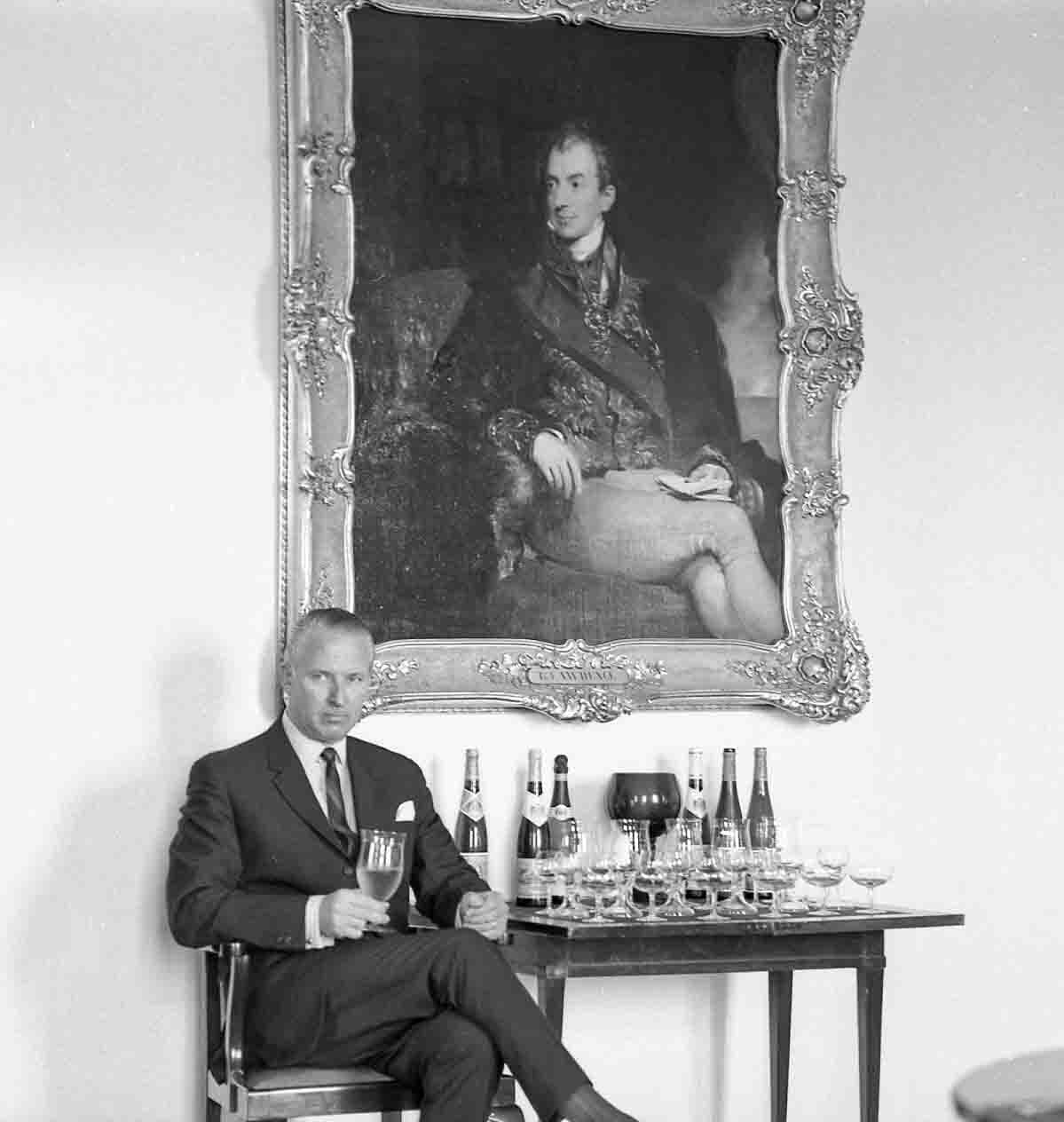- Albrecht Graf Goertz TOC:
-
- Albrecht Graf Goertz and the BMW 507
- BMW's response to Mercedes
- Albrecht Graf Goertz: A Visionary Designer
- The evolution of the BMW 507 Roadster
- Bayerische Motorenwerke
- Designing the BMW 507
- Iconic Features of the BMW 507
- Elvis Presley drove a BMW 507
- BMW 507 classic car masterpiece
- Design mastermind Graf Goertz
- Examples of Graf Goertz design
- Graf Goertz Rare Photos
- Graf Goertz FAQ
Albrecht Graf Goertz and the BMW 507
Albrecht Graf Goertz and the BMW 507 embody a remarkable collaboration between a visionary designer and an iconic automobile. Graf Goertz, renowned for his expertise in automotive design, left an indelible mark on the industry with his unique creations.
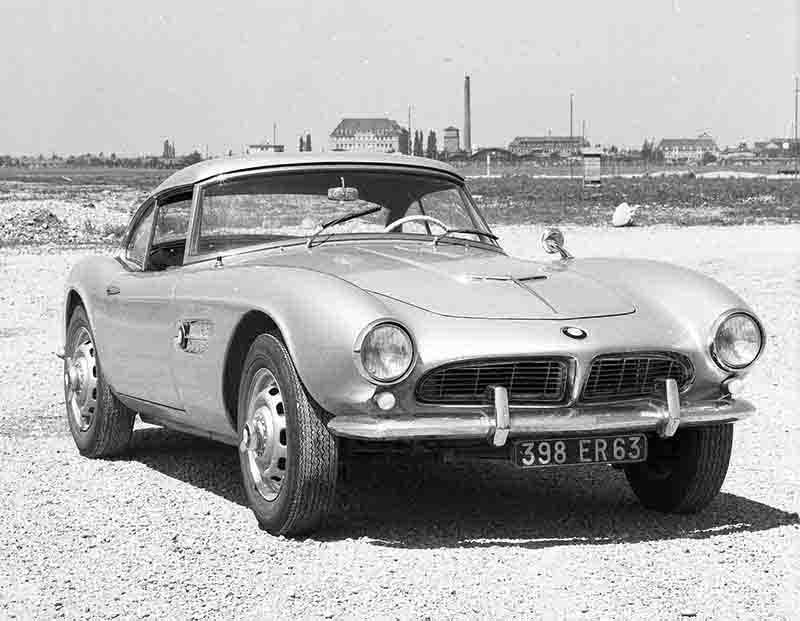
Among his notable achievements, the BMW 507 stands out as a masterpiece that captures both elegance and performance.
In the early 1950s, the automotive landscape was a strategic crossroads for Bayerische Motoren Werke (BMW). For a company struggling to re-establish its post-war identity, survival depended on a high-risk, high-reward move into a new market segment.
BMW needed more than just a new vehicle; it required a halo car, an aspirational icon capable of creating competitive differentiation, redefining its brand image, and capturing the public’s imagination on the world stage.
Defining BMW's DNA
Goertz's journey as a designer was shaped by his background, training, and the influences that guided his artistic sensibilities.
His passion for automotive design led him to develop a philosophy that emphasized the harmony between form and function.
With an eye for detail and a commitment to excellence, Goertz sought to create vehicles that were not only visually striking but also practical and engaging to drive.
In the context of the automotive industry, the birth of the BMW 507 marked a significant moment.
Collaborating with BMW, Goertz played a pivotal role in the design and development of this iconic roadster.
The project emerged at a time when post-war Europe was yearning for a luxurious and stylish sports car, and Goertz's vision perfectly aligned with this demand.
The BMW 507, brought to life by Goertz's creative genius, boasted a design that exuded timeless beauty.
Its exterior showcased sleek lines, a sculpted hood, and a distinctive front grille, capturing the attention of onlookers.
Inside, the BMW 507 provided a luxurious and comfortable driving experience, with its thoughtfully crafted interior featuring premium materials and a driver-focused layout.
BMW's response to Mercedes
BMW was a troubled car company in the early fifties.
It lacked the right models, and the Bavarians didn't have a glamorous sports car either. In contrast to the competition from Stuttgart.
BMW was seeking to revitalise its image and expand its product range.
The company recognised the growing demand for a luxurious and high-performance sports car, particularly in the North American market.
Mercedes introduced such a full-throttle icon in 1954 with the series version of the 300 SL gull-wing car.
BMW in Munich were also working on a luxury sports car , but there was still no promising idea for the look of the car.

Albrecht Graf Goertz: A Visionary Designer
Goertz's early years were marked by exposure to various forms of art and design.
Growing up in Germany, he had a deep appreciation for aesthetics and craftsmanship.
His family's background in the arts instilled in him a passion for creativity from a young age.
This early exposure laid the foundation for his later pursuits in the field of automotive design.
Albrecht Graf von Goertz was born on January 12, 1914, the second son to an aristocratic family in Germany.
After attending school, the young Count started an apprenticeship with the Deutsche Bank in Hamburg in 1933.
Within one year, he switched jobs and went to the London-based private bank Helbert Wagg &Co.
In 1935, Goertz applied to the American embassy at Grosvenor Square for an entry visa to the USA. In the autumn of 1936, he left Europe for New York City.
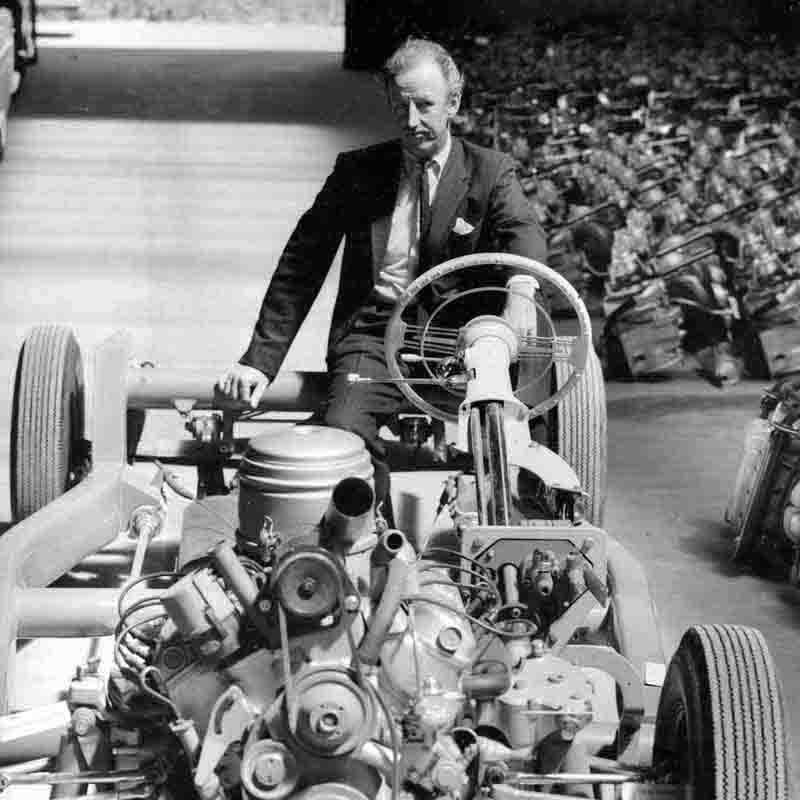
A distant relative in New York helped him when he first arrived, but soon the young Count relocated to Los Angeles.
To earn a living, Goertz worked at a car wash, in a factory for aircraft engines, and at a flight service.
The car aficionado watched with great interest the emerging Hot Rod era and grasped the opportunity in 1938.
Goertz rented a garage and showroom located on Rodeo Drive and began to modify Ford Model A and B models.
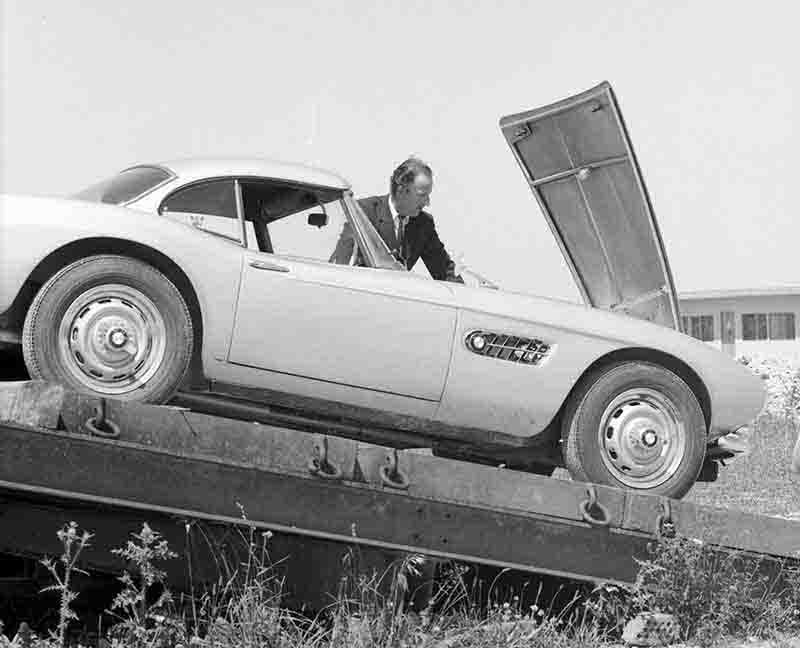
The evolution of the BMW 507 Roadster
In 1940, Goertz stepped aside from his fascination and served in the army for five years.
When he returned to Los Angeles, he took the Paragon out of the garage, made all the necessary travel arrangements and headed for NewYork once again.
This would bring about a fateful turn of events that would soon change everything for the young Count.
In the parking lot of the world famous Waldorf Astoria hotel, Goertz recalls, in his own words, what had transpired: "There was a strange car in front of me, so I got out of my car to have a look at the other car and the man sitting in it got out to have a look at mine.
This man was Raymond Loewy, a renowned designer.
Loewy invited Goertz to his office, sent him to a design college and gave him a job in the Studebaker studio in Indiana shortly thereafter.
Goertz's formal training took place at the Art Center College of Design in Pasadena, California.
There, he honed his skills and developed a keen eye for detail.
His time at the prestigious institution provided him with the technical knowledge and artistic sensibilities necessary to excel in the competitive world of automotive design.
However, it was not only his education that shaped Goertz's design philosophy.
He was influenced by a wide range of sources, including other notable designers and the world of art and fashion.
Goertz had a deep admiration for the works of renowned coachbuilders, such as Pininfarina and Carrozzeria Touring, who showcased elegance and sophistication in their designs.
Goertz's design philosophy emphasized the marriage of form and function.
He believed that a successful automotive design should not only be visually striking but should also enhance the overall driving experience.
This holistic approach to design ensured that his creations were not just aesthetic marvels but also practical and engaging vehicles to drive.

Bayerische Motorenwerke
Austrian-born Max Hoffman who was considered the most important U.S. car importer for European luxury cars brands like Mercedes, Porsche and BMW in the 1950's, had already initiated series production of the 300 SL, and knew about the design problems in Munich.
His influence was so significant, that the German car factories provided him with early insight into their planning. He encouraged a friend from New York to send some sketches to BMW.
This acquaintance was Albrecht Graf Goertz.
The young count's designs were well received by the BMW management, and only a few weeks later in January 1955 the contracts were signed with the Bayerische Motoren Werke.

Designing the BMW 507
Goertz's involvement in the creation of the BMW 507 marked a pivotal moment in automotive history.
The project commenced in the mid-1950s, with Goertz tasked with designing a sports car that would embody the essence of elegance, performance, and exclusivity.
Drawing upon his artistic sensibilities and his deep understanding of automotive design principles, Goertz set out to create a vehicle that would captivate enthusiasts and redefine BMW's image.
Goertz's inspiration for the BMW 507's design derived from a variety of sources.
He sought to blend elements of classic roadsters with modern styling cues, aiming for a timeless aesthetic.
The flowing lines and muscular curves of the bodywork reflected the era's emphasis on graceful elegance, while the car's proportions and stance exuded a sense of power and performance.
Throughout the design process, Goertz worked closely with BMW's engineering team to ensure that his vision could be transformed into a practical and drivable vehicle.
Balancing aesthetics with engineering feasibility, Goertz integrated functional elements seamlessly into the design, creating a harmonious fusion of form and function.
The BMW 507's design underwent several iterations and refinements before reaching its final form.
Goertz's attention to detail and his unwavering commitment to perfection resulted in a design that met his exacting standards.
The end result was a visually stunning and technologically advanced sports car that would capture the imagination of automotive enthusiasts worldwide.
The birth of the BMW 507 was a testament to the collaborative efforts between Albrecht Graf Goertz and BMW.
Their shared vision and dedication to creating a remarkable sports car culminated in a design that transcended its era, captivating enthusiasts then and continuing to do so today.
The BMW 507 would become an enduring symbol of automotive excellence and an iconic representation of Goertz's design prowess.
The technical basis for the new sports car was the chassis of the BMW 502 3.2 litre Super Sedan, shortened by 35.5 centimetres.
Parallel to the two-seater 507, Goertz was given the assignment for a second project.
After preparatory work by Kurt Bredschneider, he developed the 503 model.
In less than a year the coupé and convertible BMW 503 and the roadster 507 were born.
For Albrecht Graf Goertz, it was his breakthrough as a designer.
The Iconic Features of the BMW 507

The BMW 507 boasted a range of iconic features that contributed to its enduring status as a symbol of automotive excellence.
From its captivating exterior design to its meticulously crafted interior, the 507 showcased the remarkable artistry and attention to detail that Albrecht Graf Goertz infused into every aspect of the vehicle.
The BMW 507's exterior design remains one of its most recognizable and admired attributes. Goertz's vision for the 507 encompassed a harmonious blend of elegance and sportiness.
The sleek and flowing lines of the bodywork accentuated the car's aerodynamic profile and created a sense of fluidity even when at rest.
The graceful curves and proportions of the 507's bodywork were reminiscent of classic roadsters, evoking a sense of timeless beauty.
One of the most distinctive elements of the BMW 507 was its front grille.
Featuring a vertical kidney-shaped design, the grille emphasized the car's strong visual presence and served as a signature styling cue.
The hood of the 507 displayed subtle and well-defined lines that further enhanced its aesthetic appeal.
Step inside the BMW 507, and you would find a meticulously crafted interior that exuded luxury and comfort.
Goertz paid equal attention to the interior as he did to the exterior, ensuring a cohesive and inviting environment for the driver and passengers.
The dashboard layout of the BMW 507 showcased a clean and elegant design.
It featured a combination of analog instruments and controls, providing the driver with a classic yet intuitive experience.
The attention to detail extended to the choice of materials, with high-quality leather upholstery and exquisite wood accents adorning the cabin, creating an ambiance of refinement and sophistication.
Comfort was a key consideration in the BMW 507's interior design.
The seats were ergonomically designed and upholstered in plush leather, providing excellent support during spirited driving or leisurely cruises.
The interior space was thoughtfully laid out to offer ample legroom and an overall sense of openness.
One of the defining characteristics of the BMW 507 was the meticulous attention to detail exhibited throughout the vehicle.
Goertz's commitment to excellence was evident in every aspect of its design.
From the precisely crafted body panels to the chrome accents and emblems, each element was meticulously executed to enhance the car's overall aesthetic.
The fit and finish of the BMW 507 were of the highest quality, reflecting the craftsmanship and dedication that went into its production.
Every seam and joint seamlessly integrated into the overall design, resulting in a visually cohesive and visually stunning sports car.
Elvis Presley drove a BMW 507
Both cars were presented at the IAA (Internationale Automobil-Ausstellung) in 1955 and catapulted BMW to the top of the automobile Olympics in one fell swoop.
Company boss Hanns Grewenig telegraphed to New York, because Goertz had not even come to the exhibition in Frankfurt: "The 507 is the star of the exhibition.
Congratulations!". The BMW 507 immediately became an icon, its designer a star.
Goertz was compared with Bertone, Pinin Farina and other world-class designers.
Elvis Presley, who was already known as the "King of Rock'n'Roll", used to drive the BMW 507 during his military service in Germany.
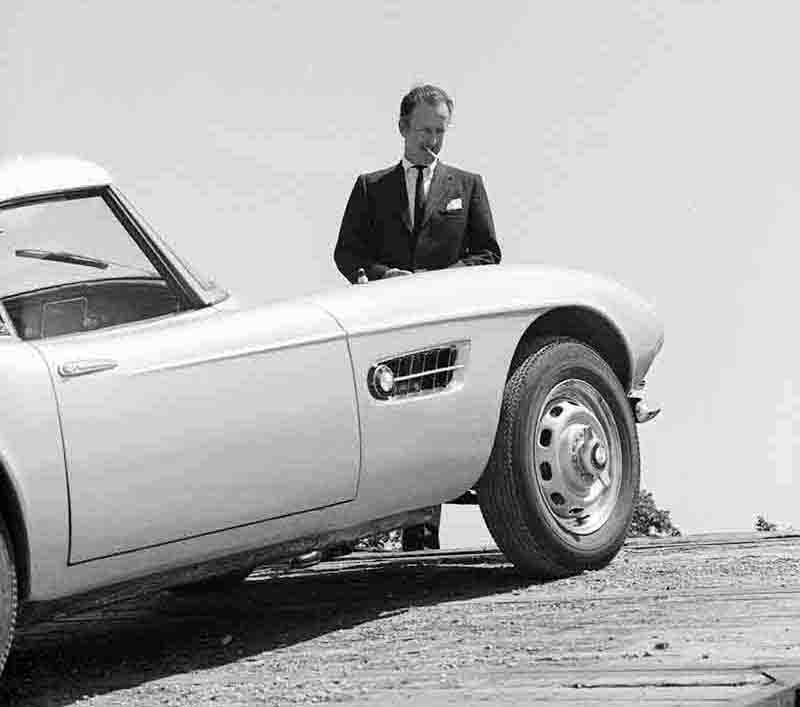
BMW 507 classic car masterpiece
In an exhibition entitled "Made in USA - Design by Albrecht Graf Goertz", the "Museum für Kunst und Gewerbe" in Hamburg, which owns the designer's estate, provides an insight into the work of the man who was one of the first universal industrial designers to establish a completely new style with his emphatically unconventional manner.
"Count Goertz wouldn't stand a chance in the car industry today," said Andreas Braun from the BMW Museum in Munich. "He worked on his own initiative, thus personally assuming the aesthetic responsibility and taking a high risk.
But he was also trusted to deliver a truly unique design," Braun describes Goertz's approach. "My impression is that nowadays no young designer is given such freedom"
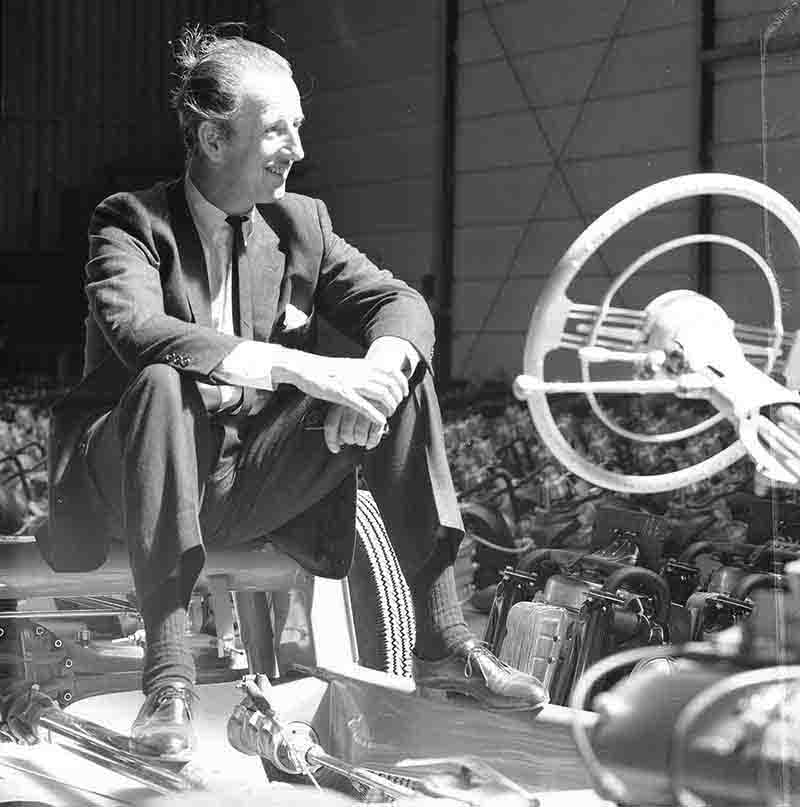
Goertz came, designed and left again. Only as an outsider could he, for example, simply flatten the then classic BMW kidney in the 507 model and pull it so wide that it was practically unrecognisable.
A BMW employee would probably have been accused of this as a sacrilege and not allowed to get away with it.
The sports car, however, was extremely well suited to this visual insubordination.

The fact that the 507 became an economic disaster for BMW was not due to its design; the car cost 26,500 marks at the time and was thus far too expensive; only 251 of the model with aluminium bodywork were largely built by hand.
Money could not be earned under these circumstances. "But the car is priceless for the brand image," says BMW historian Braun.

The BMW 507's legacy extends beyond its aesthetic appeal.
It played a significant role in shaping BMW's image and reputation as a manufacturer of premium, high-performance vehicles.
The 507 showcased BMW's ability to produce not only practical sedans but also exclusive sports cars that combined luxury with exhilarating driving experiences.
Furthermore, the BMW 507 had a profound influence on subsequent automotive designs.
Its elegant silhouette and attention to detail set the standard for future roadsters and sports cars.
Elements of the 507's design language can be seen in later BMW models, demonstrating the lasting impact of Goertz's vision.
Today, the BMW 507 is highly sought after by collectors and enthusiasts, commanding a significant presence in the classic car market.
Its rarity and iconic status have made it a coveted symbol of automotive excellence, with values continuing to rise.
Owning a BMW 507 has become a testament to automotive connoisseurship and a tangible connection to the legacy of Albrecht Graf Goertz.
Beyond the automotive realm, the BMW 507 stands as a testament to the power of art and design to transcend time.
It serves as an inspiration for artists, designers, and enthusiasts across various disciplines, showcasing the fusion of beauty and functionality.
Design mastermind Graf Goertz
Goertz subsequently drew and designed for numerous car manufacturers.
For BMW, for example, he created sketches and models for a four-seater Isetta and a so-called mid-size car.
He also produced body moulds for Porsche, Renault and Datsun. Goertz designed the Fairlady prototype for the Japanese manufacturer.
Later, the Datsun 240 Z model became the Datsun 240 Z - and the Z series became one of the most widely sold sports car series ever.
However, there was a fierce dispute about how high Goertz's share in the success was to be estimated.
Only in 1980 did the Count and Nissan reach an amicable agreement.
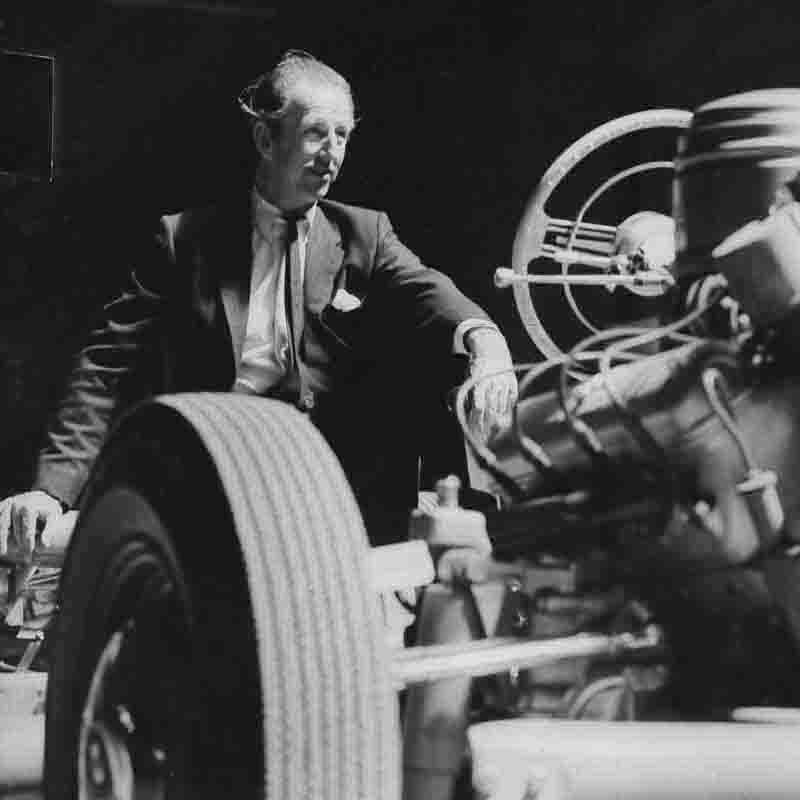
Goertz did not limit himself to car design alone.
He also designed musical instruments, radios, sportswear, kitchen appliances, school furniture and a Steinway anniversary grand piano.
He never owned a BMW 507, by the way; however, he drove a BMW M3 sports car until his old age (Goertz died in 2006).

Even today, the BMW 503 and the BMW 507 are considered absolute dream cars.
Sporty, elegant and cultivated, they represent the core attributes of a BMW car.
As we celebrate the work of Albrecht Graf Goertz and the BMW 507, let us also embrace the inspiration it offers to appreciate and recognize the artistic value that automobiles bring to our lives.
The BMW 507 reminds us that a well-designed vehicle can transcend its mere functionality and become an object of art that ignites passion and leaves an indelible mark on our collective imagination.
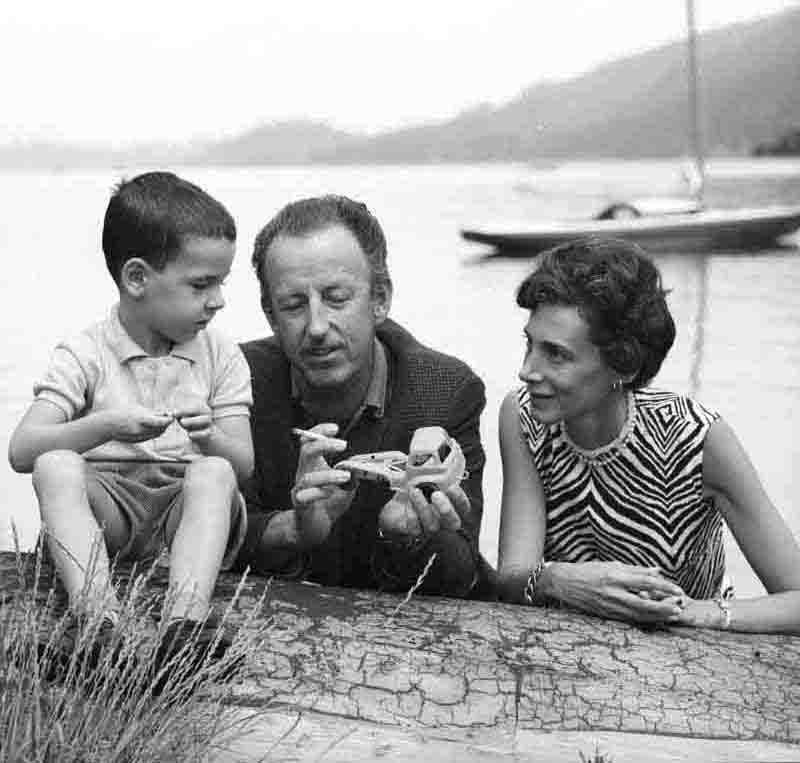
Goertz's artistry and creative power went far beyond automotive design. He designed a wide range of everyday objects, from fountain pens and cameras to musical instruments, furniture and textiles.
Driven by Passion, Crafted by Goertz: The Untamed Spirit of the 507
From a German count with a dream for speed, emerged a Bavarian beauty: the BMW 507.
His flowing lines, inspired by American hot rods, met German precision, birthing a timeless icon.
Though commercially limited, its impact echoed through time, influencing cars like the Z8 and forever etching Goertz's name in automotive history.
Examples of Goertz design
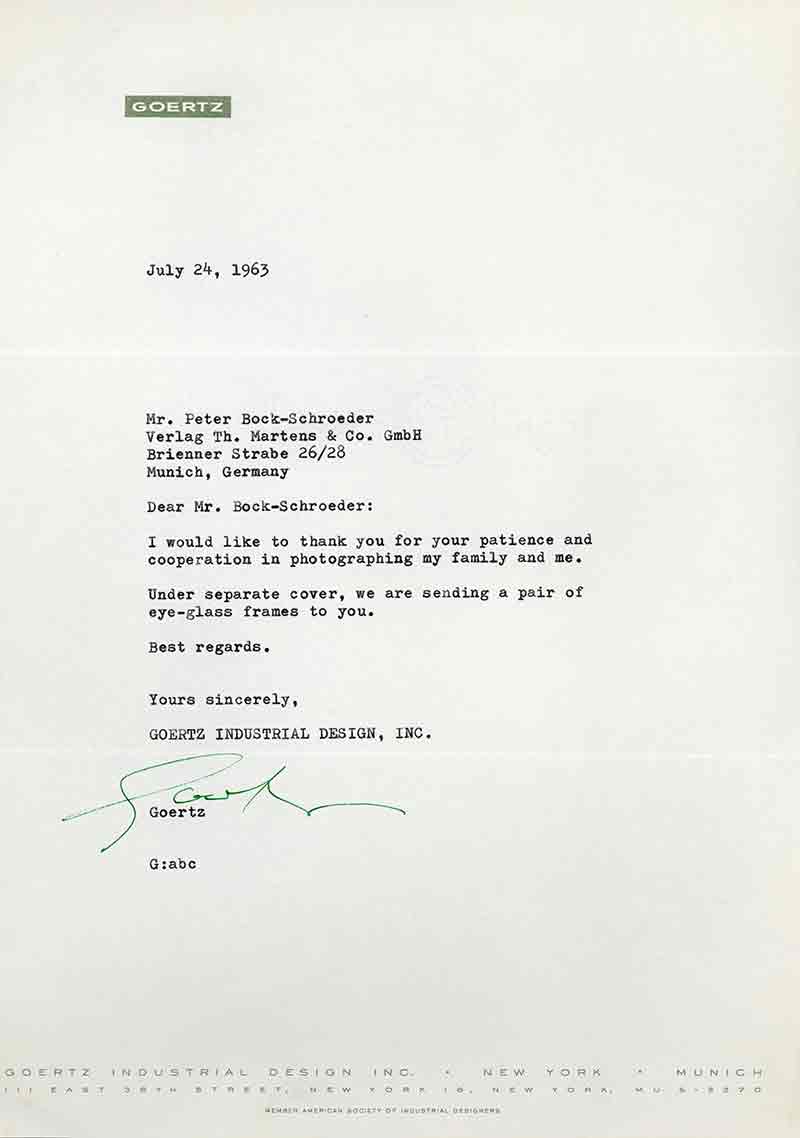
BMW 503 and BMW 507; Agfa camera; Kienzle table clock; Rowenta iron, Lighters, coffee machine, toaster etc.; Mont Blanc fountain pen, Biros, Disc Pen; Custom Craft fibreglass sports boat; Polaroid camera; SABA radios, televisions and others; ACCO office equipment; Datsun Silvia, Datsun 240Z; Fuji film camera, film projector; Bicicletas Monark bicycle; school furniture; Oxford Filing Supply office furniture; Jensen jewellery; Puma sportswear and accessories.
Graf Goertz Rare Photos by Bock-Schroeder
Graft Goertz had not only created an icon of the BMW brand but for many, one of the most beautiful two-seaters in automotive history.
Graf Goertz FAQ
The Unseen Karajan
Rare glimpses of the Maestro

